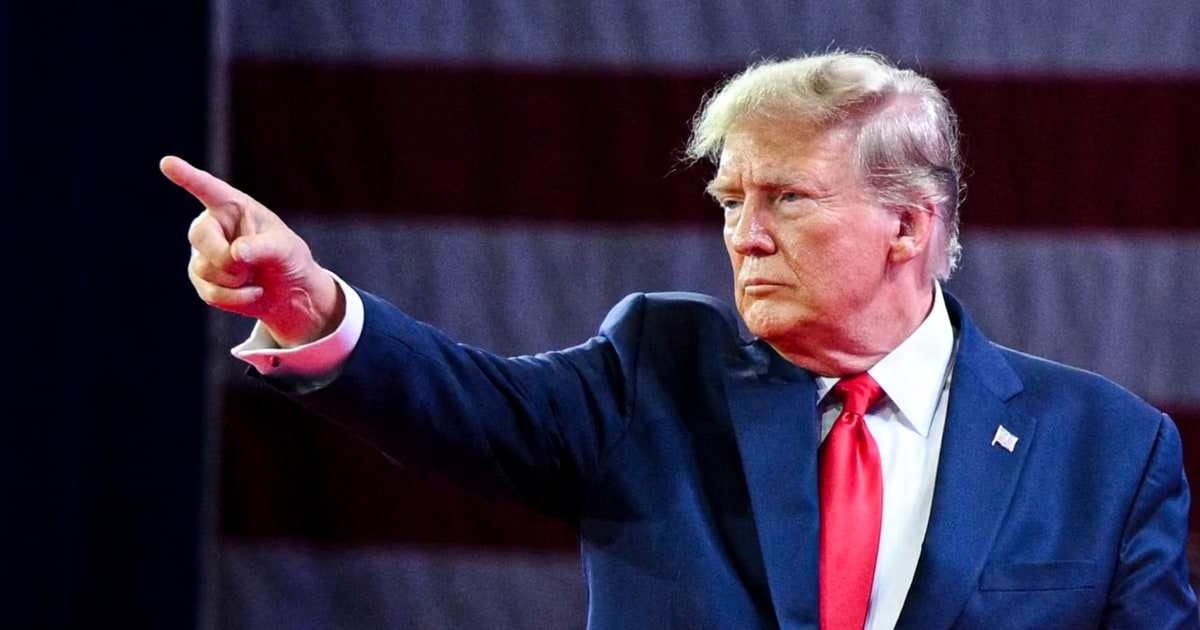By Dartunorro Clark - NBC News
Officials of the Office of the Census of the Administration of former President Donad Trump devised various strategies to
exclude undocumented immigrants
from the
Census 2020.
According to
an internal document obtained through a public records request by the nonprofit organization profit Campaign Legal Center , and provided to NBC News, those officials had a briefing with then Secretary of Commerce Wilbur Ross in August of last year about these strategies.
It is the
first public revelation
that Trump Administration officials tried to find a way to exclude the country's undocumented population from being counted in the census, after the then president signed a directive with that objective in the past. July.
The measure directed Ross, whose agency oversees the census, to provide the president with
data on the number of undocumented people
so that when Census officials presented the final count to Trump, he could exclude them.
Some Elected Officials Question Hispanics Count in the 2020 Census
April 29, 202100: 26
The census is required by the Constitution to take place
every 10 years
and is used to determine
how many members each state gets in the House of Representatives.
The data is also used to calculate the share of
local governments
in the
$ 1.5 trillion
of many federal programs.
The memo includes a strategic analysis of
three options
that the Census Bureau under Trump considered using to carry out his Administration's plan and exclude undocumented immigrants from the count.
[The 2020 Census and its impact on Congressional seats: Texas wins two, California and New York lose one]
There is no indication that the plan has been executed.
Last September, a federal court blocked Trump's order and President
Joe Biden reversed the directive
shortly after taking office. Biden also blocked another directive from his predecessor for the office to collect citizenship information from all US residents, using administrative records. This came after the Supreme Court rejected the Trump Administration's effort to add a question about citizenship to the census questionnaire.
Jade Ford, an attorney for the Campaign Legal Center, said the memo reveals not only the
illegal ways in which the previous Administration attempted to carry out the plan
, but also that it would most likely have produced
deeply flawed data.
This is how the political map of the United States will change after the 2020 Census
April 27, 202102: 50
"This did not happen, but it is still important because
future administrations could try to do this again
," Ford said.
"This was all part of that plan to really radically shift power between states by excluding undocumented immigrants from the count," he added.
Trump administration officials knew the data would be inaccurate because each strategy in the document had "pros" and "cons," and one option would flout Supreme Court precedent, Ford said.
[The Supreme Court avoids ruling on exclusion of undocumented immigrants from the 2020 Census, what does it mean?]
For example, one of the options they considered was to
count everyone in ICE detention centers
and affiliated parts of county jails to
determine the number of undocumented immigrants in the country
, and then exclude them from the list of a jurisdiction. However, according to Ford, this would have been a very
inaccurate
way
of trying to estimate the population of undocumented immigrants because some people in ICE detention centers are in the country legally.
The memorandum itself recognizes this issue in the "cons" section by suggesting that it should be assumed "that all prisoners living in detention centers are here illegally or some proportion."
It also acknowledges that the number of undocumented immigrants in the centers would be at the "lower end" of "really illegal people."
America's population grew at its slowest rate since the Great Depression
April 26, 202100: 40
Another option would have been to turn to data from the
American Community Survey,
known as the "long" census, which annually collects demographic data from approximately 3% of the nation's households.
However, in 1999 the Supreme Court rejected the uses proposed by the Census Bureau for statistical sampling, such as the methods used in that survey, to calculate the population for purposes of distribution in Congress.
Additionally, the Census Law prohibits the agency from using sampling methods to determine distribution.
The memorandum simply lists this option as a "against".
Another option that was considered was to
use federal administrative data from other agencies
, which the office has long used to make estimates, but not to exclude undocumented immigrants.
The internal document states that this option would have found "a greater number of illegal immigrants," but also notes that the number of undocumented immigrants in the Administration's records is "probably low."
"This shows how far they are willing to go to do this and face legal challenges," Ford said.
Joe Biden nominates Latino Robert Santos as director of the Census Bureau
April 14, 202102: 39
A Census Bureau spokesperson referred to the agency's January statement when asked for comment by NBC News. It said the agency would enforce Biden's executive order, which orders the agency
"not to include information on citizenship or immigration status."












/cloudfront-eu-central-1.images.arcpublishing.com/prisa/KMEYMJKESBAZBE4MRBAM4TGHIQ.jpg)


